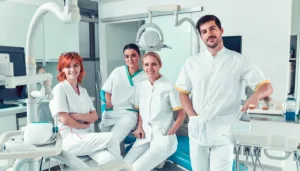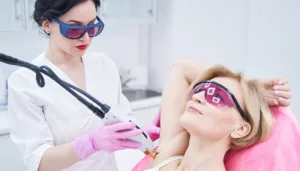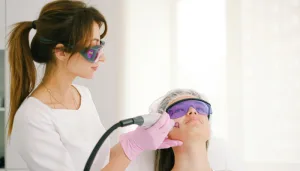
Aesthetic medicine is becoming increasingly popular among healthcare professionals, particularly doctors looking to expand their skill set. With a growing demand for cosmetic treatments, aesthetic courses for doctors offer valuable training in this exciting field.
These courses not only enhance clinical skills but also provide opportunities for career advancement and improved work-life balance. In this article, we will explore the various aspects of aesthetic courses tailored for medical professionals.
Key Takeaways
- Aesthetic medicine is a growing field with high demand for trained professionals.
- Courses range from beginner to advanced levels, catering to all skill sets.
- Hands-on training is essential for building confidence and competence in aesthetic procedures.
- Choosing the right course involves assessing personal goals and current qualifications.
- Ongoing education is vital to keep up with trends and advancements in aesthetic treatments.
Understanding Aesthetic Medicine
Overview of Aesthetic Medicine
Aesthetic medicine is basically a field that focuses on improving a patient’s appearance through cosmetic treatments. It’s not just about vanity; it’s about helping people feel better about themselves. Think non-surgical procedures like Botox and fillers, but also things like laser treatments and skin rejuvenation.
It’s a growing area, and it’s becoming more and more popular as people look for ways to enhance their natural beauty without going under the knife. It’s a pretty broad field, and it’s constantly evolving with new technologies and techniques.
Importance of Aesthetic Training
Okay, so you might be thinking, “I’m a doctor, I already know anatomy and stuff. Why do I need special training?” Good question! While your medical background is a great foundation, aesthetic medicine requires a different skillset. It’s not just about knowing where to inject something; it’s about understanding facial aesthetics, patient psychology, and how to manage expectations.
Plus, there are specific techniques and potential complications that you need to be aware of. Proper training is key to providing safe and effective treatments, and to avoid any unpleasant outcomes. Trust me, you don’t want to be the doctor who gives someone a wonky lip.
Current Trends in Aesthetic Procedures
What’s hot in the world of aesthetics right now? Well, there’s a big move towards more natural-looking results. People aren’t necessarily looking for drastic changes; they want to enhance what they already have.
Here’s a quick rundown:
- Skin Tightening: Procedures like radiofrequency and ultrasound are popular for tightening loose skin without surgery.
- Non-Surgical Nose Jobs: Using fillers to reshape the nose is a big trend.
- Personalised Treatments: Tailoring treatments to individual needs and concerns is becoming more common.
The aesthetic medicine world is always changing, so it’s important to stay up-to-date with the latest trends and techniques. What’s popular today might be old news tomorrow, so continuous learning is key.
Types of Aesthetic Courses Available
One of the first things you’ll notice is the sheer number of courses out there. It can be a bit overwhelming, but don’t worry, we can break it down.
Basically, they fall into a few main categories, each designed for different skill levels and interests.
Foundation Courses for Beginners
These are your entry point. Think of them as the ‘Aesthetics 101’. They’re designed for medical professionals with little to no prior experience in aesthetics. You’ll learn the basics of facial anatomy, skin assessment, and the principles behind common procedures.
Expect a lot of theory, but also some hands-on practise with simulated or live models. It’s all about building a solid base before you move on to more complex stuff.
Advanced Aesthetic Techniques
Once you’ve got the basics down, you might want to specialise. Advanced courses focus on specific areas like non-surgical facelifts, advanced toxin techniques, or complex dermal filler procedures.
These courses usually require you to have completed a foundation course and have some practical experience under your belt. They often involve more in-depth anatomical study and a greater emphasis on managing complications.
Specialised Training in Injectables
Injectables are a huge part of aesthetic medicine, so it makes sense to get really good at them. These courses focus specifically on botulinum toxin and dermal fillers. You’ll learn about different injection techniques, product selection, and how to achieve natural-looking results.
A big part of this is understanding facial muscles and how they affect the outcome. You’ll also cover how to handle potential problems, like bruising or asymmetry. It’s a good idea to keep up with these courses, as new products and techniques are always coming out.
Benefits of Aesthetic Courses for Doctors

Enhancing Career Opportunities
Aesthetic medicine could seriously open up some new doors. Think about it: you could add a whole new string to your bow, maybe even specialise down the line.
More specialisation equals more opportunities. It’s not just about the money (though that’s a factor, let’s be honest), it’s about having options. You could work in a clinic, start your own practise, or even just offer aesthetic treatments alongside your current role.
Improving Work-Life Balance
Let’s face it, the medical profession can be brutal. Long hours, high stress – it takes its toll. One of the biggest draws of aesthetic medicine is the potential for a better work-life balance.
You often have more control over your schedule, which means more time for family, hobbies, or just, you know, life. It’s not a guaranteed walk in the park, but many doctors find the flexibility a real game-changer.
Expanding Clinical Skills
Taking an aesthetic course isn’t just about learning how to inject fillers; it’s about broadening your overall clinical skillset. You’ll get a deeper understanding of facial anatomy, skin science, and patient consultation techniques.
Plus, you’ll develop a whole new set of practical skills that can be applied in various medical settings. It’s like giving your brain a workout and adding some cool new tools to your medical toolbox.
Honestly, I’ve seen doctors who were feeling a bit burnt out get a real boost from learning aesthetics. It’s something different, something creative, and it can reignite that passion for medicine that might have been fading a bit.
Choosing the Right Aesthetic Course
But with so many courses out there, how do you pick the right one? It can feel a bit overwhelming, but let’s break it down.
Assessing Your Current Skills
First things first, be honest with yourself about where you’re at right now. What experience do you already have? Have you done any injectables before, or are you starting from scratch?
Knowing your current skill level is key to choosing a course that’s actually going to help you grow. If you jump into an advanced course without the basics, you’ll probably just end up feeling lost and frustrated. Foundation courses are there for a reason!
Identifying Your Career Goals
What do you actually want to do with your new skills? Are you hoping to add a few aesthetic procedures to your existing practise, or do you dream of opening your own clinic? Maybe you’re interested in a specific area, like laser treatments or just injectables.
Your goals will shape the type of course you should be looking for. A general course is good if you’re unsure, but if you have a specific interest, a specialised course might be better.
Researching Course Providers
Okay, so you know your skill level and your goals. Now it’s time to do some digging. Not all courses are created equal, and some providers are definitely better than others. Look for courses that are accredited and taught by experienced practitioners.
Check reviews and ask around – what are other doctors saying about the course?
Don’t just go for the cheapest option. A good course is an investment in your future, and it’s worth paying a bit more for quality training and support. Think about it like this: a poorly trained aesthetic practitioner is a danger to themselves and their patients.
Practical Training and Hands-On Experience
Importance of Live Model Training
You know your hyaluronic acid from your botulinum toxin. But let’s be real, reading about it is nothing like actually doing it. That’s where live model training comes in. It’s the bridge between knowing and doing, and honestly, it’s where the real learning happens.
Think of it like this: you can read a cookbook cover to cover, but you won’t become a chef until you start cooking. Live models give you the chance to:
- Apply your knowledge in a safe, supervised environment.
- Develop your technique and precision.
- Learn to assess different facial structures and tailor treatments accordingly.
- Gain confidence in your abilities.
Honestly, the first time I injected a live model, my hands were shaking. But with each injection, I got more comfortable, more confident. It’s a process, and live model training is what makes that process possible.
Access to Ongoing Support
Training doesn’t end when the course does. Nope. You need support after you’ve finished, especially when you’re starting out. Good aesthetic courses understand this and provide ongoing support. This could be anything from:
- Mentorship programmes: Having an experienced practitioner to turn to for advice is invaluable.
- Online forums: A place to ask questions, share experiences, and learn from others.
- Refresher courses: A chance to brush up on your skills and learn new techniques.
- Direct access to trainers: Being able to contact your trainers with specific questions or concerns.
Utilising Simulation Techniques
Simulation is becoming a bigger deal in aesthetic training, and for good reason. It lets you practise procedures in a safe, controlled environment before you even touch a real patient. It’s like a flight simulator for aesthetics.
Here’s why it’s useful:
- Reduces risk: You can make mistakes without harming anyone.
- Improves confidence: You can practise until you feel comfortable with a procedure.
- Enhances learning: You can focus on the technical aspects of a procedure without the pressure of a live patient.
Simulation can involve anything from using mannequins to virtual reality. It’s not a replacement for live model training, but it’s a great way to supplement it and build a solid foundation of skills.
Regulatory Considerations in Aesthetic Practise
Understanding Legal Requirements
Navigating the legal landscape of aesthetic medicine can feel like a maze, right? But it’s super important to get it right. Different regions have different rules about who can perform which procedures, what qualifications are needed, and what kind of insurance you need to have.
It’s your responsibility to know and follow these rules. Ignoring them can lead to serious consequences, like fines or even losing your licence to practise. So, do your homework, check with the local authorities, and maybe even get some legal advice to make sure you’re on the right side of the law.
Maintaining Patient Safety
Patient safety is, without a doubt, the most important thing. It’s not just about avoiding lawsuits; it’s about doing what’s right for the people who trust you with their health and appearance. This means:
- Using only approved products and equipment.
- Following strict hygiene protocols to prevent infections.
- Being prepared to handle any complications that might arise.
- Having clear protocols for patient consultation, assessment, and aftercare.
Remember, a happy patient is a safe patient. And a safe practise is a successful practise.
Ethical Considerations in Aesthetics
Aesthetics isn’t just about technical skill; it’s also about ethics.
- Are you being honest with your patients about what a procedure can and can’t do?
- Are you respecting their autonomy and making sure they’re making informed decisions?
- Are you putting their best interests first, even if it means turning down a procedure that you don’t think is right for them?
These are tough questions, but they’re questions you need to ask yourself every day. It’s about building trust with your patients and creating a practise that you can be proud of. It’s about more than just making money; it’s about making a positive difference in people’s lives.
Future of Aesthetic Medicine
Emerging Technologies in Aesthetics
Okay, so what’s next for aesthetic medicine? Well, it’s all about new tech, isn’t it? We’re talking about stuff that sounds like it’s straight out of a sci-fi film. Think advanced laser systems that can target specific skin issues with even greater accuracy, or ultrasound tech that can lift and tighten skin without any surgery.
And let’s not forget about the potential of AI. AI could help us analyse skin conditions and predict the best treatments for individual patients. It’s pretty wild when you think about it.
Predicted Industry Growth
Here’s the thing: the aesthetics industry isn’t slowing down anytime soon. More and more people are interested in these treatments, and the market is growing fast.
This means more opportunities for doctors who are trained in aesthetic procedures. It’s not just about looking good; it’s about feeling good, too, and people are willing to invest in that. The growth is driven by a few things:
- An ageing population wanting to maintain a youthful appearance.
- Increased awareness and acceptance of aesthetic procedures.
- Technological advancements making treatments safer and more effective.
The Role of Continuous Education
If you’re thinking about getting into aesthetic medicine, or if you’re already working in the field, here’s a piece of advice: never stop learning. The industry is always changing, with new techniques and technologies coming out all the time.
Continuous education is key to staying ahead of the curve and providing the best possible care for your patients.
Keeping up with the latest trends and best practises isn’t just about improving your skills; it’s about ensuring patient safety and maintaining ethical standards. The more you know, the better equipped you’ll be to handle any situation and deliver great results.
Conclusion
Pursuing aesthetic courses can be a game changer for doctors looking to expand their skills and career opportunities. These courses not only provide essential training in popular treatments like Botox and dermal fillers but also offer a chance to connect with a growing community of professionals in the field.
Whether you’re just starting out or looking to refine your skills, there’s a course out there for you. Embracing this path can lead to a more fulfilling career, allowing you to blend your medical expertise with creativity and patient care. So, if you’re considering a shift into aesthetics, now is the perfect time to take that step.
Frequently Asked Questions
What is aesthetic medicine?
Aesthetic medicine is a branch of medicine focused on improving appearance through various procedures, such as skin treatments and cosmetic surgery.
Why should doctors take aesthetic courses?
Doctors can benefit from aesthetic courses as they learn new skills, enhance their career options, and provide better services to their patients.
What types of aesthetic courses are available?
There are different courses for beginners, advanced techniques, and specific training in injectables like Botox and fillers.
How do I choose the right aesthetic course?
Consider your current skills, what you want to achieve in your career, and research different course providers to find the best fit.
Is practical training included in aesthetic courses?
Yes, many courses offer hands-on training with live models, which is essential for gaining confidence and practical experience.
What are the legal requirements for aesthetic practise?
Doctors must understand the legal rules for aesthetic practises, ensure patient safety, and follow ethical guidelines in their work.






